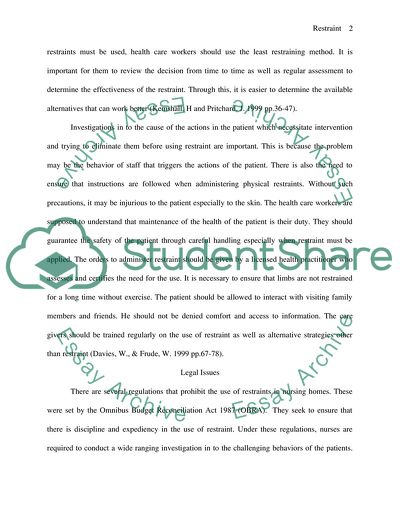Cite this document
(The Use and The Risks of Restraints Research Paper, n.d.)
The Use and The Risks of Restraints Research Paper. Retrieved from https://studentshare.org/health-sciences-medicine/1721945-restraint-to-use-or-not-use-safety-or-risk-educating-health-workers-and-families
The Use and The Risks of Restraints Research Paper. Retrieved from https://studentshare.org/health-sciences-medicine/1721945-restraint-to-use-or-not-use-safety-or-risk-educating-health-workers-and-families
(The Use and The Risks of Restraints Research Paper)
The Use and The Risks of Restraints Research Paper. https://studentshare.org/health-sciences-medicine/1721945-restraint-to-use-or-not-use-safety-or-risk-educating-health-workers-and-families.
The Use and The Risks of Restraints Research Paper. https://studentshare.org/health-sciences-medicine/1721945-restraint-to-use-or-not-use-safety-or-risk-educating-health-workers-and-families.
“The Use and The Risks of Restraints Research Paper”, n.d. https://studentshare.org/health-sciences-medicine/1721945-restraint-to-use-or-not-use-safety-or-risk-educating-health-workers-and-families.


